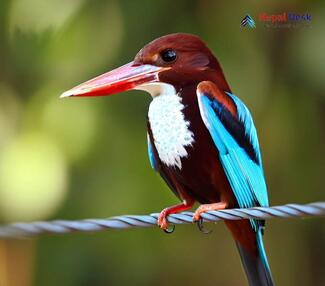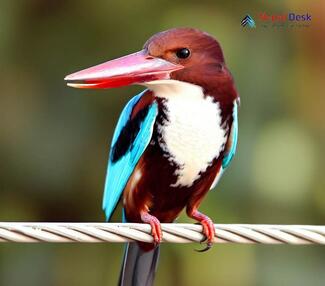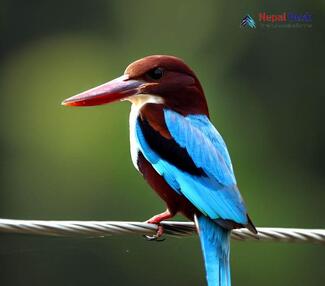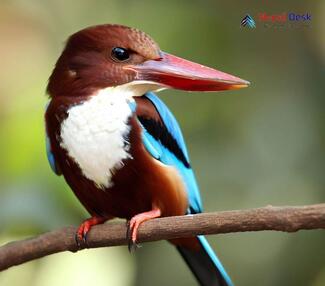The White-breasted Kingfisher (Halcyon smyrnensis) is a striking and charismatic bird that captures the attention of bird enthusiasts across its range. This stunning species possesses fascinating features, an incredible habitat range, intricate breeding and nesting habits, and even a unique connection to the birdwatching community in Nepal. In this article, we'll explore the taxonomy and physical characteristics of the White-breasted Kingfisher, its preferred habitats and diet, breeding and nesting behaviors, and finally, its presence in Nepal.
Taxonomy and Physical Features
Belonging to the family Alcedinidae, the White-breasted Kingfisher falls under the genus Halcyon. Their scientific name 'Halcyon smyrnensis' originates from Halcyon – a name derived from Greek mythology – while 'smyrnensis' refers to the ancient city of Smyrna in modern-day Turkey. These beautiful birds display vibrant plumage with colors ranging from radiant turquoise on their back, wings, and tail to bright white on their throat and chest. Additionally, their head is adorned with rich chocolate-brown feathers. With a stout body shape and strong beaks, White-breasted Kingfishers have a distinctive appearance that makes them unmistakable.
Habitat and Diet
White-breasted Kingfishers can be found in a wide variety of habitats across Asia and the Middle East. They primarily inhabit the edges of forests, wetlands, mangroves, coastlines, rivers, lakes, and sometimes even gardens or farmlands. Surprisingly adaptable to different environments, they're not solely dependent on water sources like other kingfisher species.
Their diet mainly consists of fish, but they've been known to eat insects, crustaceans, amphibians, and reptiles such as small snakes or lizards – showcasing their versatile feeding preferences. Their powerful beaks are highly effective for catching prey both on land and in water, making them formidable hunters.
Breeding and Nesting
The breeding season for White-breasted Kingfishers usually begins with the onset of the monsoon and may last until early autumn. These fascinating birds display intricate courtship rituals, engaging in calls, wing displays, and aerial pursuits to establish a bond with their partner. Once a pair has established, they choose a nesting spot together – often burrows dug into riverbanks or rotten tree trunks.
The female lays 3-7 eggs, which both parents contribute to incubating for about 20 days. Upon hatching, the chicks are cared for by both parents who provide them with food and protection until they fledge after around three weeks.
Presence in Nepal
White-breasted Kingfishers hold a special place in the hearts of birdwatchers in Nepal. It is one of the most widespread and easily observable kingfisher species in the country. They commonly inhabit subtropical areas up to an altitude of 1,200 meters. As an essential component of Nepal's rich biodiversity, these charismatic birds never fail to impress visitors with their captivating colors and intriguing behaviors.
In conclusion, White-breasted Kingfishers offer a captivating insight into the world of avian wonders. Their captivating physical features, adaptability to various habitats, distinct diet preferences, unique breeding habits, and strong presence in Nepal make them truly remarkable species to behold.




